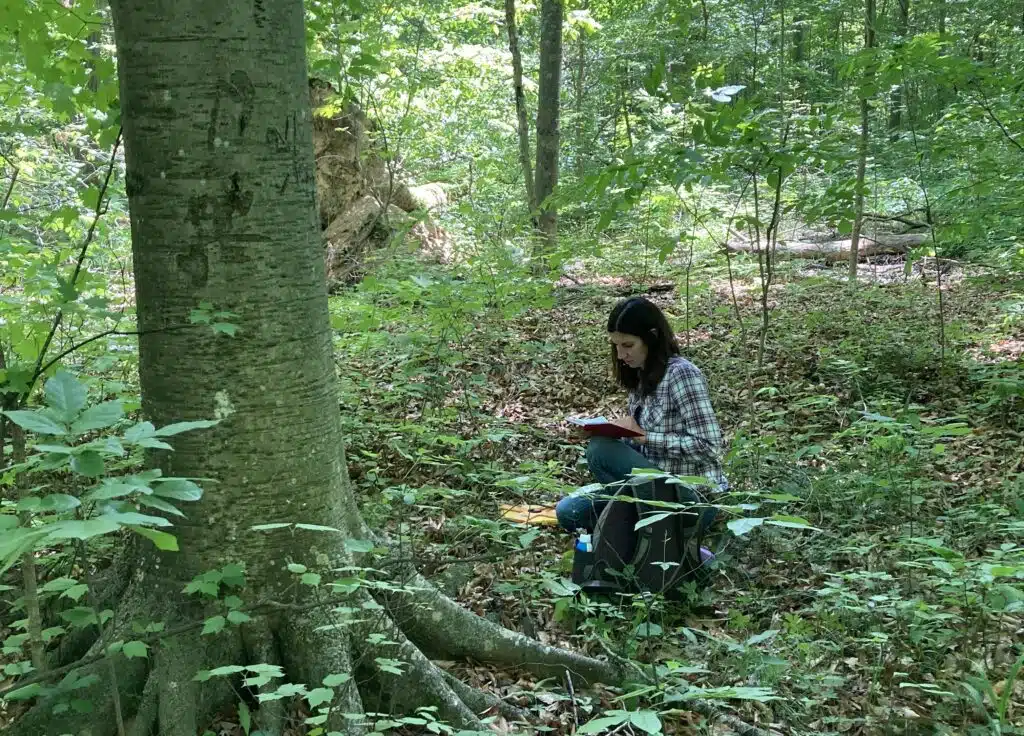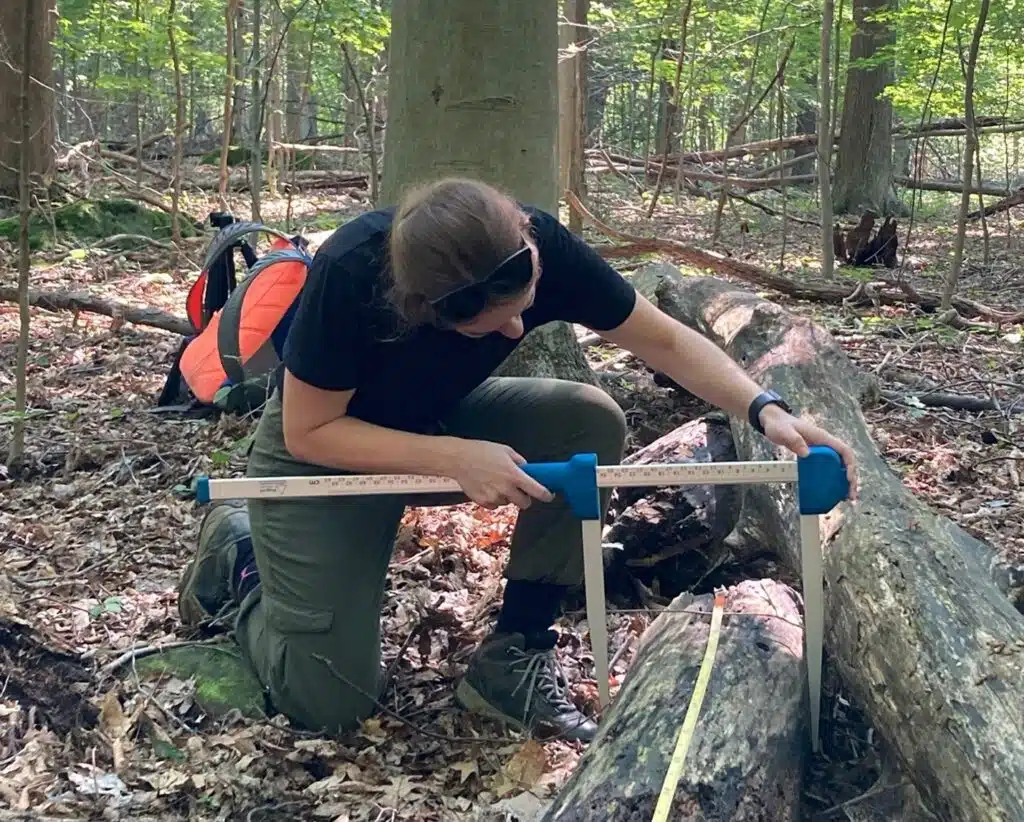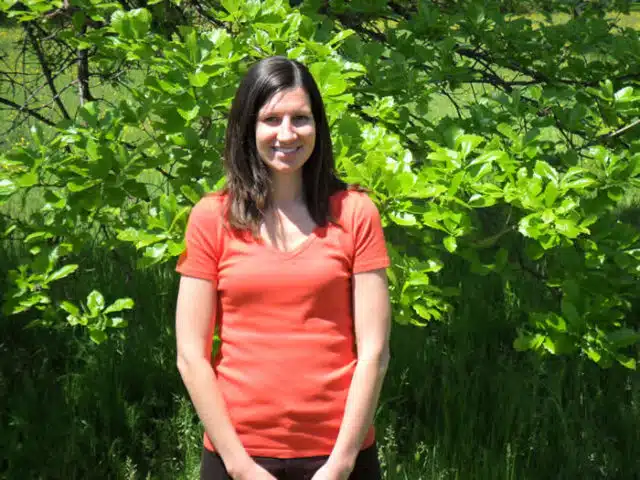
by: David Burke and Sarah Kyker
If you live in northeastern Ohio, you probably have heard of beech leaf disease (BLD), which was first spotted in Lake County in 2012. BLD affects American beech (Fagus grandifolia) trees and leads to dark interveinal banding on their leaves. Since it was first found at the arboretum in 2014, HF&G scientists have been researching the causes and consequences of BLD, along with potential treatments and strategies to save the American beech. One of the reasons why BLD research at Holden Arboretum is important is because we are located in the same county where this disease originated. But it’s also important that we go beyond the arboretum to study this disease as it spreads in Ohio and across North America.

For the past four years, we have partnered with Tom Macy, the Forest Health Program Administrator at the Ohio Department of Natural Resources (ODNR), to understand the cause of BLD. Macy and other members of ODNR send American beech buds from around the state of Ohio to our labs at HF&G. Once in the lab, we search the buds for the causal agent of BLD, a tiny nematode species called Litylenchus crenatae mccannii that lives within the leaf tissue and causes damage.
More specifically, we search at the molecular level for the presence of the nematode’s DNA. It’s something that HF&G’s Research Specialist Mary Pitts has done a lot of over the past four years. Mary’s work has even found Litylenchus crenatae mccannii DNA in some Ohio counties before BLD symptoms were present on the trees.
Screening for BLD nematodes
This method involves screening environmental DNA, called eDNA, from around Ohio. Screening in this manner has given us leads on where to travel to monitor beech trees for the presence of symptoms. One such place Mary has traveled to is Hueston Woods State Park in Butler County. So far, she’s visited three times in three years to sample beech buds. Each time, looking closely at 20 different buds, she’s found just one positive hit to Litylenchus crenatae mccannii DNA in the Hueston Woods samples. As of now, though, BLD symptoms have yet to be seen at this site.

Another site we have traveled to is Goll Woods, a Nature Preserve in Fulton County. Though BLD symptoms are found at Goll Woods, our eDNA samples are largely clean. In other words, the nematode’s DNA is typically not detected in the buds sent to us from Goll Woods. As with Hueston Woods, each sample we’ve checked has had just one nematode-positive bud.
This had us puzzled until we visited and found that the specific location within Goll Woods where buds are being collected has healthy looking beech trees, even though the BLD is present on other trees throughout the preserve. It’s possible that the nematode has yet to spread to the healthy trees and over time we will see BLD symptoms spread throughout Goll Woods. But it’s also possible that some of these healthy trees are resistant to BLD and, thus, do not show symptoms.
Understanding BLD
We hope to be able to continue to monitor and learn from these healthy trees. Perhaps we will find some genetically resistant trees to use for breeding, or maybe we will find that certain conditions in this healthy area are hindering the spread of the nematode in some fashion. One thing is for certain: We will continue to research this disease to save the beech trees. You can follow along as we do!

Brianna Shepherd and members of the Stuble lab are setting up long-term monitoring sites to study the impact of BLD on the forest composition in beech-dominated forests. Long-term monitoring plots are being established throughout the region, including at Holden Arboretum and Goll Woods, to assess changes in forest communities as the incidence and severity of BLD increases. Data are being collected on light availability, understory cover, and tree composition across a diversity of tree sizes and soil types. Stay tuned to learn more about this research in an upcoming blog!

Sarah Kyker, PhD
Postdoctoral Research Associate
Dr. Sarah Carrino-Kyker is a microbial ecologist interested in the influence of environmental change, both natural and human-caused, on microbial communities. Because microorganisms are small in size, they are environmentally sensitive. Yet their health and functionality can have a large impact on the overall health of a habitat due to their role in ecosystem processes. Her current research is focused on the soil communities of forests, how they’re impacted by environmental changes, and how these impacts in turn affect the health of the overall habitat or ecosystem.











